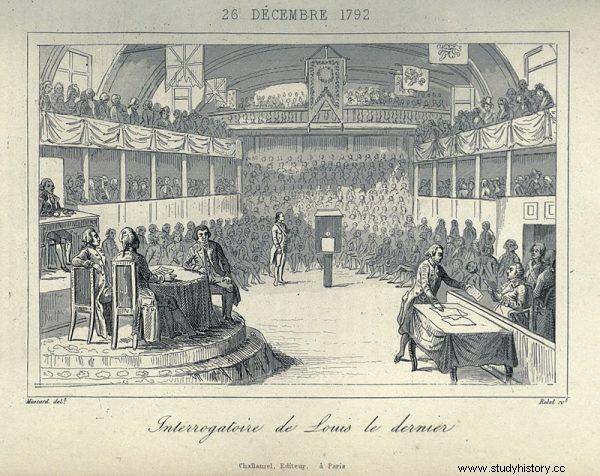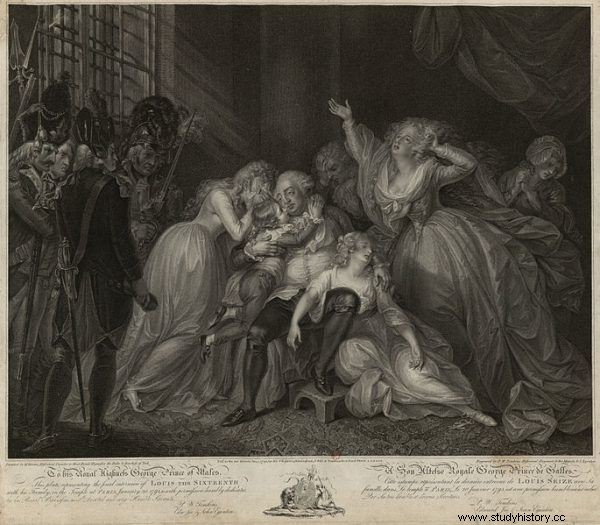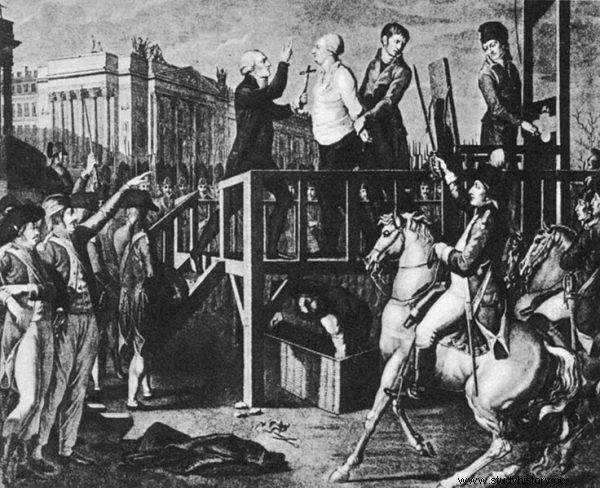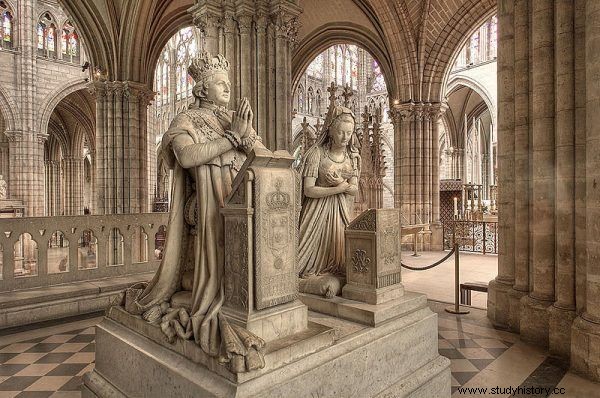He was a good-hearted good-hearted man who was not very fit to be a king. However, he ruled in the most difficult times for France and ended his life on the guillotine - a modern invention praised by Robespierre. This execution has gone down in history. What were the last days and the death of Louis XVI like?
The reign of Louis XVI is a time of great anxiety in France. The social problems of the disintegrating feudal system and the growing role of the third estate were compounded by economic hardship, natural disasters, and the enormous debts of the French court. The ineffectiveness of the ruler, contemptuously called by society "locksmith", "glutton" and "hunter" and the overwhelming aversion to his wife Marie Antoinette were only a nail in the coffin of a failing system. The famous French Revolution broke out.
The process of "Citizen Kapet"
The king was officially removed from power and imprisoned in Temple on August 10, 1792. This day is considered the overthrow of the monarchy in France and is undoubtedly one of the most important in the history of the French Revolution. Initially, many supporters of the death penalty for the king did not appear, but with time, more and more of them began. The finding in the Tuileries of documents confirming Ludwik's contacts with Austria and Prussia had a huge impact on the mood. The results of the expertise were very general, but the Convention found that they discredit the ruler and justify the demand for the highest penalty.

Louis XVI being questioned by the National Convention
The king's trial began on January 11, 1793 in the Convention and was called the "Citizen Capet" trial. During the revolution, all aristocratic titles were abolished and the former king was called Louis Capet, in reference to Hugo Capet, the first ruler of France from the Capetian dynasty. Ludwik was accused of high treason. Among other accusations there were also:organizing an army against the population of Paris, storing flour, coffee and sugar in royal warehouses, and provoking the massacre in the Field of Mars.
There were attempts to defend the king, but his fate was in fact a doomed.
"Sire, they voted to die!"
Louis XVI became one of the first victims of the Great Terror. After the facade trial, a death sentence was pronounced. The king heard about this in Temple from Malesherbes, who was supposed to say "Sire, they voted to die!" In a touched voice.
The ruler took the news calmly. He was to reflect on his reign, he looked for possible accusations. He summed up his thoughts that he only wanted the good of his subjects and that "Death does not scare me, I have great confidence in God's mercy." He asked for Hume's "History of England" to be provided and read carefully about the death of Charles I.

Louis XVI's last conversation with his family - 1795 drawing
The king rejected any idea of revolt or attempting to retake the Temple as he believed it would only bring new sacrifices. After the king's intervention, it was agreed that he could meet his wife, children and the priest before his death, but the execution was not allowed to be postponed by 3 days. The meeting with the family was touching, the king blessed the children, but he did not allow them to spend the night together in a cell. After 10 pm he ate his supper with gusto and went to sleep.
Execution
The execution took place on January 21, 1793 on Revolution Square (formerly Ludwik XV Square, which in 1795 changed its name to Plac Zgody; the latter name is still used today).
The king got up at 5 am, and an hour later he attended the mass celebrated by the invited chaplain. At 9 a.m. a group of guards came for him. When the king saw that they were all wearing headgear, he demanded a hat. He handed over the will for Marie Antoinette to one of the guards, and then got into a covered carriage, which transported him to the place of execution. The king walked to the scaffold with a firm step, as if reconciled with fate.

Father Edgeworth de Firmont gives Louis XVI the last sacrament - drawing from 1793
His calmness and composure made an electrifying impression on the audience. As reported by Jan Baszkiewicz, a detailed description of the execution has survived in the newspaper "Les Revolutions de Paris:
After arriving at the Revolution Square ... [Ludwik] got out of the carriage. He was immediately handed over to the executioner; he took off his tailcoat and tie himself, and stayed in an ordinary vest made of soft white wool. He did not want his hair cut, and most of all tied; a few words uttered by the confessor soon convinced him. He climbed the scaffold, stepped to the left bank, looked at the surroundings for a few moments with his face very red, and asked if the drummers would stop beating their drums. He wanted to lean out and speak, many voices shouted out to the enforcers - there were four of them - to do their job. Nevertheless, when he was tied, he said these words clearly:I am dying innocently, I forgive my enemies, I wish that my blood would benefit the French and soothe the anger of God.
There are several versions of the ruler's last words. According to another, he had said:“I am dying innocent of all the crimes that have been accused of me. I forgive the perpetrators of my death and ask God that the blood you shed never befall France.
The execution itself, however, took quite a long time. Due to the weight of the ruler (Louis XVI was extremely overweight), the guillotine could not cope with the huge neck and several cuts were required to separate the ruler's head from the body. This was, of course, accompanied by the desperate screams of the dying person. Finally the executioner Charles Henri Sanson showed the severed head to the people.
After the successful execution, a chatter ran up to the ruler's body. People dipped handkerchiefs and pieces of paper in the blood of the hated king, others even tasted Louis' blue blood.
After death
The body of Louis XVI was buried in a coffin without a lid in a mass grave at the cemetery of St. Magdalena. His head (eyes still open!) Was placed between his legs.
The reactions to the execution of the ruler were very varied. Jan Baszkiewicz quotes the words of the writer Sebastian Mercier, who claimed that
the stories about the "stupor" of Paris were lying, (...) people came back from the execution as if from a holiday, holding hands, laughing, talking friendly.
On the other hand, it was in turmoil in royalist circles. According to police agents, relics of the "martyred king" were secretly sold in Paris during the worst terror of 1794. There were cuts of clothes or hair among them.

Idealized statues of Louis XVI and Marie Antoinette in Saint-Denis
Marie Antoinette outlived her husband for only nine months. In the meantime, royalists proclaimed the minor Louis XVII king, who, however, died in mysterious circumstances, and his story undoubtedly deserves a separate article.
Years later, both the king and his wife were exhumed and buried in a more dignified manner. It became possible after the so-called Bourbon restaurants in 1815. Desclozeaux, a faithful royalist who remembered the exact burial site in the cemetery, contributed to this and bought the entire area after the revolution. The remains were reburied in the crypt of Saint-Denis Basilica.
Bibliography:
- Jan Baszkiewicz, Louis XVI, Ossolineum 1983,
- Jonathan J. Moore, Hang, gut, dismember, or the history of executions, Sign Horizon 2019,
- Pierre Gaxotte, The French Revolution, Arche 2001
